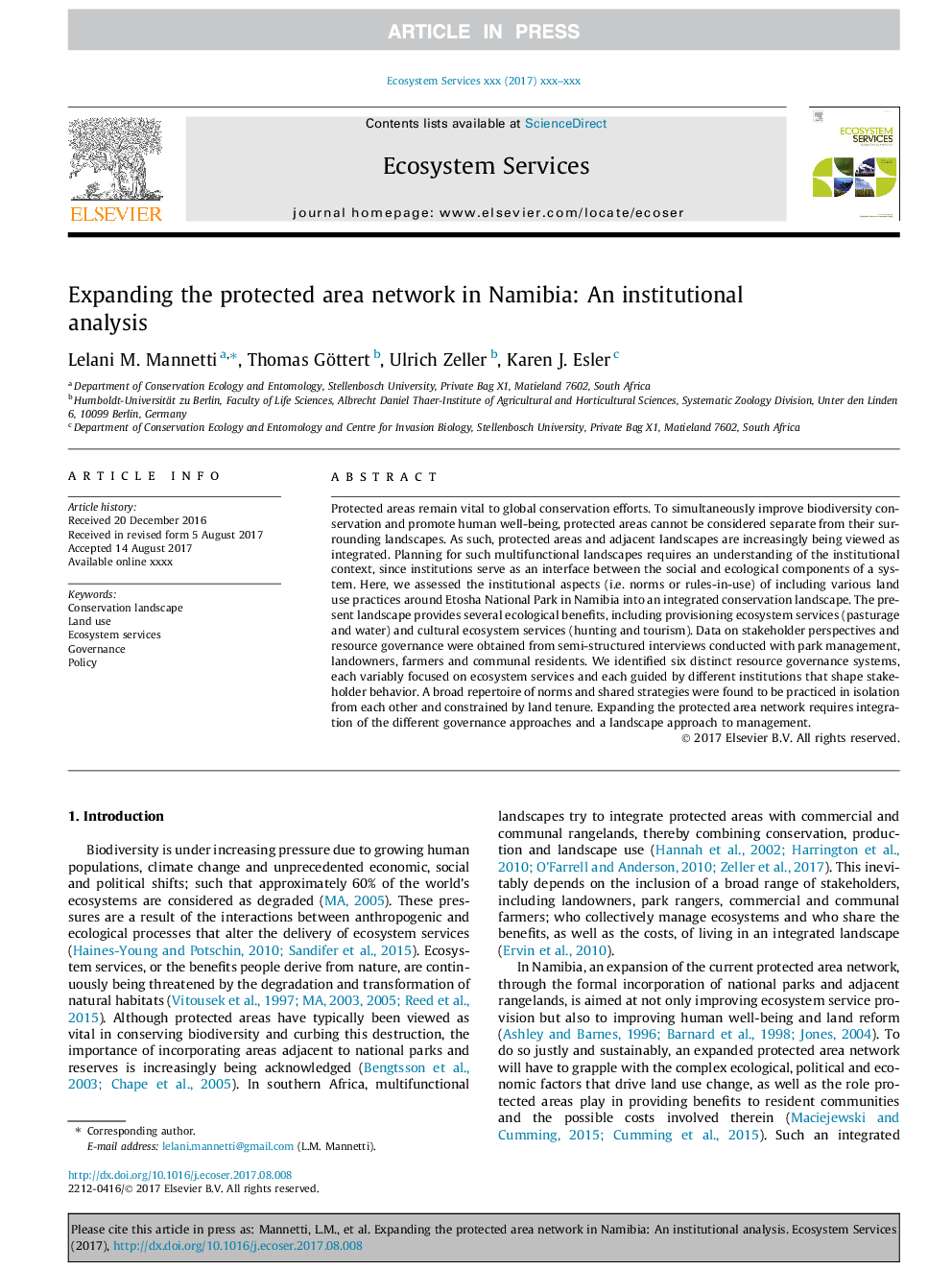| Article ID | Journal | Published Year | Pages | File Type |
|---|---|---|---|---|
| 6556508 | Ecosystem Services | 2017 | 12 Pages |
Abstract
Protected areas remain vital to global conservation efforts. To simultaneously improve biodiversity conservation and promote human well-being, protected areas cannot be considered separate from their surrounding landscapes. As such, protected areas and adjacent landscapes are increasingly being viewed as integrated. Planning for such multifunctional landscapes requires an understanding of the institutional context, since institutions serve as an interface between the social and ecological components of a system. Here, we assessed the institutional aspects (i.e. norms or rules-in-use) of including various land use practices around Etosha National Park in Namibia into an integrated conservation landscape. The present landscape provides several ecological benefits, including provisioning ecosystem services (pasturage and water) and cultural ecosystem services (hunting and tourism). Data on stakeholder perspectives and resource governance were obtained from semi-structured interviews conducted with park management, landowners, farmers and communal residents. We identified six distinct resource governance systems, each variably focused on ecosystem services and each guided by different institutions that shape stakeholder behavior. A broad repertoire of norms and shared strategies were found to be practiced in isolation from each other and constrained by land tenure. Expanding the protected area network requires integration of the different governance approaches and a landscape approach to management.
Related Topics
Life Sciences
Agricultural and Biological Sciences
Agricultural and Biological Sciences (General)
Authors
Lelani M. Mannetti, Thomas Göttert, Ulrich Zeller, Karen J. Esler,
